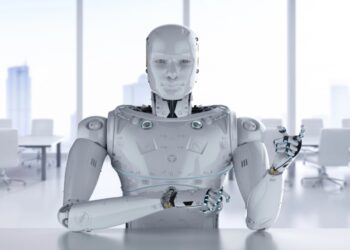The swift adoption of AI in workplaces, within a wide range of industries, has generated great debates on the effects of AI on productivity and on wages. While businesses are eagerly embracing artificial intelligence to run more efficiently and increase output, it’s unclear whether all the resulting productivity will eventually push up wages for workers.
But a recent study, conducted by the National Bureau of Economic Research in Denmark and analyzing records for 25,000 workers, concludes that AI has, for now, had little effect on employee wages and work hours.
Despite the rapid embrace of AI, the research found little evidence of altered pay or recorded hours in different occupations — from accountants to customer-support representatives to software developers — which are often perceived as the most vulnerable to AI disruption. The study found that the average time savings under AI was 2.9%, but just a fraction, between 2.8% and 6.9%, contributed to higher pay for workers.
This discovery is in concert with World Economic Forum alarm bells after it called attention to the increasing “productivity-pay gap.” As productivity has climbed, though, wage gains have fallen behind.
This disparity could be even more pronounced in an AI sphere, as companies focused on greater output and less labor could opt to be less generous to their fairy.
Some experts, though, say that the short-term effect on wages may be small but that the long-term impact could be more favorable. While AI does the boring, repetitive work, human workers can focus on the more complex, creative and strategic parts of their jobs. This change may result in the generation of new, higher-skilled jobs that pay more.
According to World Economic Forum’s ‘Future of Jobs Report 2025’, in the next five years, 11 million jobs will be created across AI and data analysis, to name a few.
Conversely, there are concerns that AI could exacerbate income inequality. High-skill workers. An April 2025 IMF working paper, High-skill workers: Not immune to the rise of robots, argues that while AI could take over some high-income jobs, individuals in high-wage positions frequently have the kinds of skills that are very compatible with teaming with AI and complementing one of each other, potentially making them more productive and higher-paid. Moreover, these people are also more likely to have more access to the increased returns on capital that AI adoption is creating.
A number of firms that jumped into AI to reduce costs by cutting headcount are now reassessing their strategies. Klarna, a finance technology company, recently reinstated human representatives because A.I. couldn’t replicate the quality of care humans could deliver.
Which indicates to me that, at least for now, while AI can certainly automate some things, the special gifts of human workers, like perspective taking and complex problem solving, remain priceless.
The way that AI will shape future wages will probably depend on a confluence of factors, including the speed and the nature of AI adoption, new skills that people will acquire, and public policy aimed at securing an equitable distribution of the economic fruits of AI.
It will be important to invest in education and training programs that prepare workers to work alongside AI and in newly created roles. Moreover, policy makers may have to take into account other measures, like fair wage policies and social safety nets, to soften the potential adverse effects on employment and income inequality.
As AI continues to advance at a dizzying pace, the relationship between productivity and wages is a crucial economic indicator to follow, one that will help determine the nature of work and economic well-being throughout the world.
















